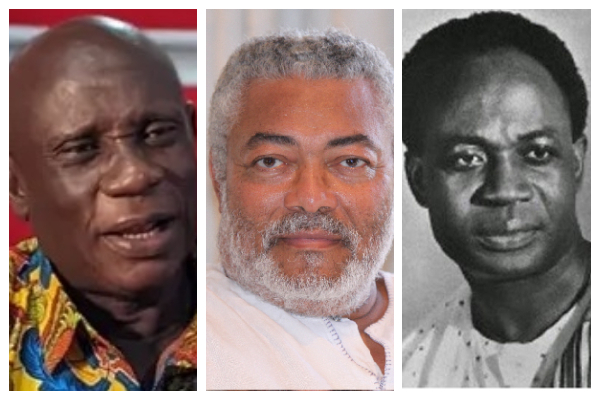16 Years After, 2nd Abuja Airport Runway Remains Contentious
LAGOS – Sixteen years after the Federal Government proposed the construction of a second runway for the Nnamdi Azikiwe International Airport (NAIA), Abuja, the project is still submerged in crisis.
Mr. Festus Keyamo, the Minister of Aviation and Aerospace Development, had revealed at the National Assembly, last week, while defending the ministry’s budget before the Joint National Assembly Aviation Committees that the contractor had proposed N532 billion adjustment to the contract for the airport’s runway, a proposal the minister firmly rejected and threatened to cancel.
The new variation of N532 billion from N90 billion, indicated 591.11 percent increase.
But a source close to the contractor, China Civil Engineering Construction Corporation (CCECC) confided in Daily Independent over the weekend that the construction company may have drastically cut down the contract sum to about N250 billion, representing about 53 percent reduction due to the rejection by Keyamo.
It was gathered that the contractor was planning to lobby the minister, but Keyamo was not disposed to meeting with the construction firm, having expressed his displeasure about the new proposed sum in the National Assembly.
The source, however, attributed the increase in the contractual sum to the current inflation in the country and the high foreign exchange rate.
As of the time the contract was firmed up in 2022, the naira was about N750 to a dollar at the parallel market, but today it has dropped to about N1,655 to a dollar.
The source said: “Our management is planning to meet with the minister on the same project. We want to continue with the construction of the airport’s runway, but it is necessary we review the contract sum upward due to the inflation in the country in the last two years.
“Also, our management is willing to further reduce the contract sum to about N250 billion from the current rate that we initially proposed. We intend to meet with the minister soon to discuss the reduction.”
Keyamo had emphasised the Federal Government’s commitment to transparency and accountability, particularly in projects of national importance like the Abuja runway expansion.
He insisted that a cost escalation of this magnitude could not be defended, even under the most unfavourable circumstances.
He said: “The variation from N90 billion to N532 billion within a space of two years is unacceptable.
The option I have is to cancel the contract. I will not allow any contractor to hold the government to ransom.”
Commenting on the issue, Dr. Alex Nwuba, aviation expert, said that the price variation of over 500 percent by the contractor against an average annual inflation of about 35 percent was unjustified.
Nwuba, however, posited that with its current traffic, Abuja airport does not need a second runway, unless the government could provide valid studies to justify its need.
He said: “The price inflation of 500 percent against an average annual inflation of about 35 percent is an unwise proposal. However, we have to worry if this is a negotiating position that will still result in a very high price escalation? This is a major concern.
“The government, having already made a huge payout, needs to think about the next best course of action. If the payment is settlement for land then they have acquired assets.”
Also Capt. Samuel Caulcrick, former Rector of the Nigerian College of Aviation Technology (NCAT), Zaria, stated that the Abuja second runway project had been a contentious issue for years, with its origins dating back to 2009 under President Musa Yar’Adua’s administration. He specifically said that the project’s cost had been a major point of contention, with varying estimates from different contractors.
He recalled that initially, Julius Berger proposed a cost of N64 billion after scaling it down from some higher figures, while Public Works (PW) suggested it could be done for N32 billion, with the prevailing pricing in 2010.
He explained that at the present exchange rate, the estimated cost had dropped to just $119.5 million, approximately N90 billion. Caulcrick further queried the bid quotation, suggesting that the contractor may be fraudulent with the intent of winning the contract.
Unlike Nwuba, Caulcrick, however, said that the airport required a second runway, insisting that the current single-runway operation was inefficient and posed risks to the country’s economy and security.
“The government must find a way to balance the need for infrastructure development with the risk of corruption and cost inflation,” he said.
Mr. Amos Akpan, aviation analyst, said that until the criteria for the price increase was made public, objective analysis on the issue may be difficult.
According to him, Keyamo had not explained to the public the benchmark that guided his decision to threaten to cancel the contract, but said as a public servant he was representing the interest of the public.
He advised the minister to search for more competitive bids that would still be within the nation’s budget with the retention of the same high standards.
Amos emphasised that the decision to provide additional runway on airports are usually derived from the aircraft traffic in and out of such facility, political and security considerations.
He posited that so far, the existing runway had not been stretched to the maximum capacity, noting that statistically and economically, the traffic was not sufficient to support a second runway.
“For instance, if there is a situation where something happens on the existing Abuja runway that prevents aircraft takeoff/ landing for 24 hours plus.
What if there is an emergency need to evacuate our president? Our president would be stuck because his aircraft would have been parked in the presidential apron.
“A second runway in this case is necessary for security and political exigencies. All decisions are not boxed into statistics and monetary gains.
My advice to the government is to follow the international pricing standards for such projects allowing for variation in line with the peculiarities of our environment.
Geographic locations do affect the cost of projects albeit within acceptable limits,” he added.
Mr. Nuhu Imam, aviation analyst, in his comment, also said that it was necessary for the public to get the details of the contract before commenting appropriately on the issue.
He, however, observed that the continuous drop in the value of the naira against major currencies in recent times may be responsible for the variation, adding that inflation had consistently been in the double digit over the years.
Imam also wondered if the procurement programme of the Federal Government was strictly adhered to before the firm was selected for the project. “Was the Bureau of Public Procurement (BPP) duly involved in this? Apart from CCECC, which other company bid for the contract and what was the procurement process? These were some of the issues that we raised in 2008 when the second runway for Abuja first came to public glare. “But what have we learnt from the past experience? Why are we back on the same page 16 years later? The National Assembly should look at the variation again,” he added. Imam, however, said that the airport needed an additional runway because of its positioning and growing traffic.
Statistics released in the last few years revealed that Abuja airport is the second busiest airport in Nigeria, after the Murtala Muhammed Airport (MMA), Lagos.
Grp. John Ojikutu, aviation analyst, wanted the National Assembly to investigate the approval of N532 billion for the contract sum from N90 billion.
He explained that the second runway appropriation began with N64 billion under Governor Hope Uzodimma as the Chairman, Senate Committee on Aviation and wondered where the new figure of N532 billion emanated from.
The Federal Government had earlier approved the sum of N825 million as compensation for the community affected by the construction of the Abuja second runway.
The government had said that the settlement with Jiwa community was reached at an inter-agency meeting.
The second runway was conceived and designed in 2009 to handle Airbus A380-800F with Category three Airfield Lighting (AFL).
The body length of that aircraft is 73 meters, with a body height of 24 meters.
The wingspan is 79.8 meters and the maximum take-off weight is about 569,000kg, about 600 tons, which is equivalent to packing 30 trailers with a full load of cement. The runway length was estimated at 4.5 kilometers, with a width span of 75 meters.









